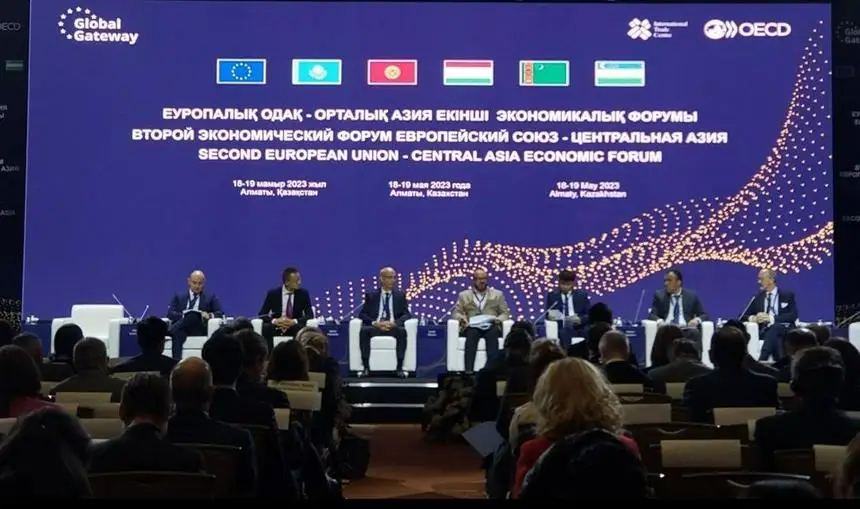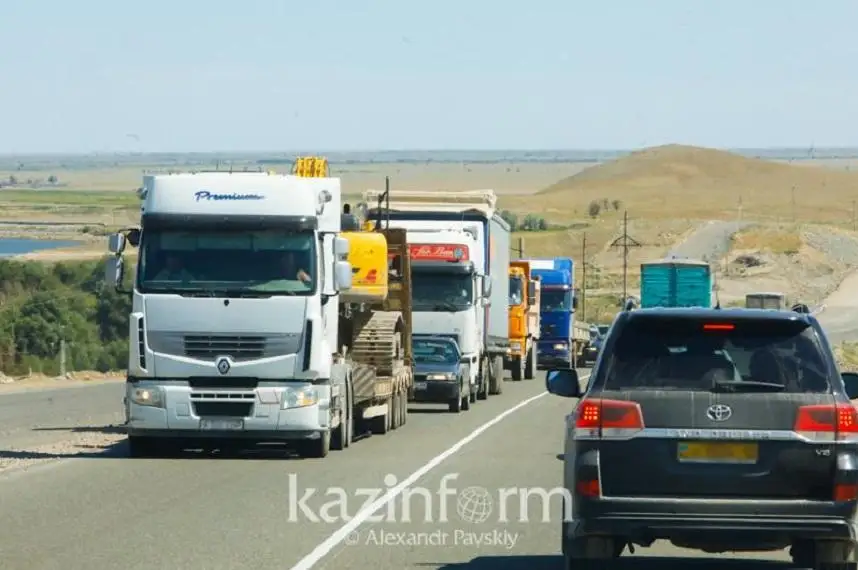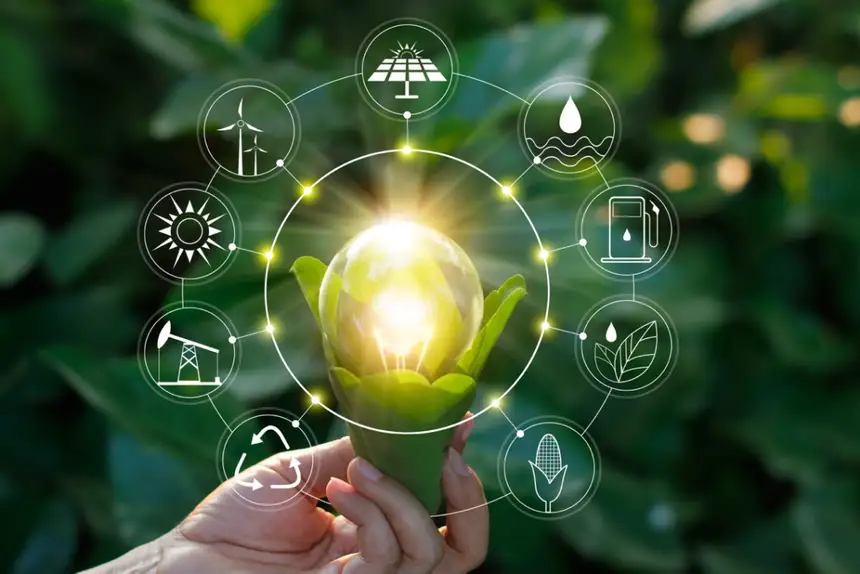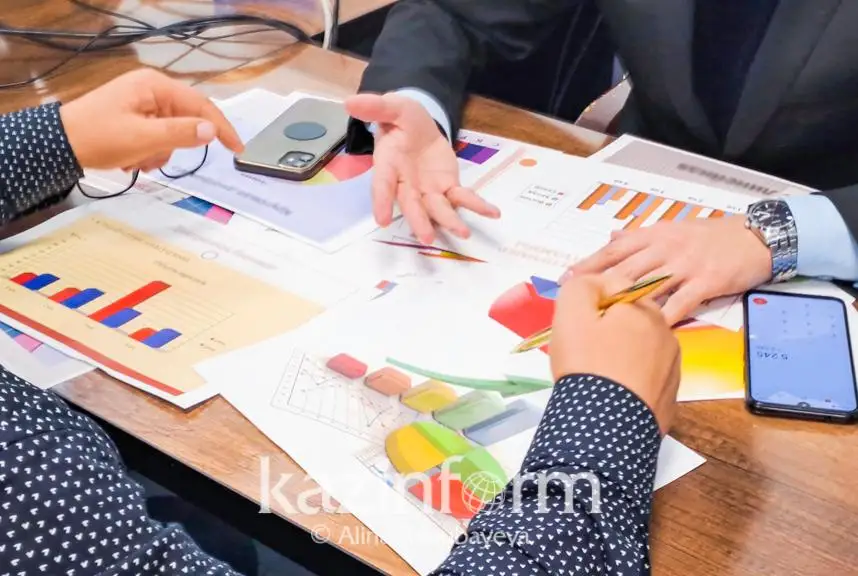Connectivity and green agenda: Kazakhstan and EU seek to boost trade, economic and investment cooperation

Trade relations
Kazakhstan's strategic location as a gateway to Central Asia, coupled with its abundant natural resources, has made it an attractive trading partner for the EU.
Kazakhstan's foreign trade turnover in January-March 2023 amounted to $32.7 billion, and in comparison, in January-March 2022, the foreign trade turnover increased by 13.4 percent in nominal terms, including exports - $18.7 billion and imports - $13.9 billion, according to the Kazakh Bureau of National Statistics.
Trade with EU countries reached $10.5 billion in this period, accounting for 32.2 percent of total trade turnover. Exports reached $8 billion, while imports made $2.5 billion.
Bilateral trade has been flourishing, reaching a record high of $41.8 billion in 2022, according to the Kazakh Bureau of National Statistics. Furthermore, Kazakhstan ranks as the EU's primary trading partner in the region.
More than 3,000 companies with European capital are operating in various sectors of the Kazakh economy, including Shell, Eni, Total, Air Liquide, Alstom, Siemens and Linde Group.
The prospects for trade cooperation are bright, with several key factors contributing to this growth.
At the second EU – Central Asia Economic Forum on May 19 in Almaty, Kazakh Prime Minister Alikhan Smailov said Kazakhstan is ready to increase the export of products to Europe in 175 commodity positions for about $2.3 billion, including in such industries as mechanical engineering, iron and steel production, food processing, and agriculture.
As a major grain producer, Kazakhstan could become a strategic partner of the EU in implementing the global food agenda, said Smailov.
The forum also saw the launch of the regional trade facilitation portal, Info Trade Central Asia Gateway, aimed at providing the business community with an end-to-end overview of cross-border formalities along Central Asian corridors.

«We give priority to the qualitative development of cooperation with the European Union and support the mutual commitment to the progressive strengthening of the Kazakh-European interaction in a spirit of trust and respect,» said Smailov.
He also underlined the new level of investment cooperation between Kazakhstan and the EU, noting last year’s volume of direct investments from the EU into Kazakhstan's economy grew by nearly 23 percent and reached $12.5 billion, a record over the last 10 years.
«We are interested in using all available opportunities for further expansion of investment cooperation,» Smailov said.
The partnership encourages Kazakhstan to expand beyond its traditional commodity-based exports, reducing its reliance on the volatility of energy markets. Strengthened trade relations also facilitate the transfer of advanced technologies and best practices, fostering innovation and modernization across various sectors.
Speaking about EU - Central Asia, Smailov said Kazakhstan welcomes the dynamic development of cooperation with the EU both bilaterally and at the interregional level.
«Thanks to the joint efforts of the countries of the region today, Central Asia is an actively developing region of great opportunities. Our countries complement each other harmoniously, and cooperation in the trade and economic sphere remains the main pivot,«he said.
 Photo: primeminister.kz
Photo: primeminister.kz
In 2022, the trade turnover between the countries of Central Asia and the EU increased by 61 percent, reaching nearly $49 billion, according to Smailov. However, the potential for growth in trade remains untapped.
Executive Vice President of the European Commission Valdis Dombrovskis commended the ties, highlighting an Enhanced Partnership and Cooperation Agreement, which Kazakhstan signed with the EU in 2015, and a memorandum in the field of sustainable raw materials, batteries and value chains of renewable hydrogen.
EPCA came into force in March 2020 and Kazakhstan became the first country in Central Asia to sign such a document with the EU.
«We are also interested in developing new routes and transport opportunities between Central Asia and the European Union. This requires attracting investors to work here in the region to remove bottlenecks with regard to transportation and help develop infrastructure,» said Dombrovskis.
Connectivity is a crucial factor
Connectivity is an increasingly important area for the EU and Central Asia. Kazakhstan also attaches significant attention to transport and logistics, investing nearly $35 billion in this sector over the past 15 years. 2,500 kilometers of railroads and 13,000 kilometers of highways have been built. There are 13 transcontinental corridors and routes, including five railways and eight motorways.
EU seeks to promote connectivity in the region through its Global Gateway strategy launched in 2021.
«The Ministry of Industry and Infrastructure Development is interested in attracting investment for the implementation of projects, including under the initiative of the EU’s Global Gateway,» said Kazakh Vice-Minister of Industry and Infrastructure Development Almaz Ydyrysov.

As trade volumes are rising while existing trade corridors are being disrupted because of geopolitical events, the EU and the European Bank for Reconstruction and Development embarked on the study of sustainable transport links between Europe and Central Asia.
The study is meant to identify the most sustainable transport connections between Central Asian economies and the extended Trans-European Transport Network.
The findings were presented on May 19. EBRD concluded, «The Central Trans-Caspian Network, traversing through southern Kazakhstan, is identified as the most sustainable option, allowing for further transport network and regional development by taking a two-layer catchment area approach that spans the territory of all five Central Asian countries and covering most of the major population and production centers of the region.»
The study proposes seven soft connectivity measures and 32 hard infrastructure investment needs. Soft connectivity measures refer to «low-cost, high-benefit action items which can yield significant benefits to the implementing countries and the wider Central Asian region.» These measures may include digitalizing transport documents, improving interoperability, trade facilitation, market liberalization, and improving tariff-setting mechanisms.
Overall, the region will need at least nearly 18.5 billion euros in total investment to significantly improve the Central Trans-Caspian Network. If these measures are implemented, transit container volume on the Central Trans-Caspian Network can increase from 18,000 twenty-foot equivalent units (TEU) as of 2022 to 865,000 TEUs by 2040, entailing a free-flow transit time of 13 days.

Kazakh Prime Minister Smailov said the joint efforts allowed reducing the time of passage of cargo from China to Europe by almost three times - from 53 to 19-23 days. The next target is 14-18 days by the end of this year.
»At the same time, the period of transit through the territory of Kazakhstan has been reduced by half - from 12 to 6 days, and we aim to reduce it to five days by the end of the year,«noted Smailov.
Investment opportunities
Kazakhstan's economic reforms align with the EU's vision of sustainable development and economic diversification. Kazakhstan's favorable investment climate, driven by political stability and commitment to economic reforms, has attracted increasing attention from EU investors.
The EU can contribute to Kazakhstan's economic diversification by investing in non-resource sectors such as manufacturing, information technology, agriculture, and tourism. This investment bolsters entrepreneurship, job creation, and knowledge and technology transfer. For example, nearly 80 percent of German investments in Kazakhstan are in the non-resource sector.
 Photo: ur.hse.ru
Photo: ur.hse.ru
At the forum, Kazakhstan and the EU signed a bilateral Cooperation Facility for 2021-2024, which envisions the implementation of projects in Kazakhstan worth nine million euros, including capacity development and institution-building activities, and support for policy dialogues leading to policy reforms.
Strategic partnership in sustainable raw materials, batteries and hydrogen
The forum also saw the signing of a road map for the implementation of the EU-Kazakhstan memorandum of understanding on strategic partnership in sustainable raw materials, batteries and value chains of renewable hydrogen, a flagship document in the bilateral cooperation.
The memorandum was signed by European Commission President Ursula von der Leyen and Alikhan Smailov in November 2022 on the sidelines of the 2022 United Nations Climate Change Conference, also known as COP27, in Egypt.
«A secure and sustainable supply of raw materials, refined materials and renewable hydrogen is a key layer to help build a new, cleaner foundation for our economies, especially as we move away from our dependency on fossil fuels. This partnership with Kazakhstan shows Europe's commitment to work with partner countries on our shared commitments to a greener and more resilient future in line with the Global Gateway Strategy and the objectives of the REPowerEU Plan,» said Ursula von der Leyen.
The partnership covers three areas of collaboration - closer economic and industrial integration in the strategic value chains of raw materials, batteries and renewable hydrogen; increasing the resilience of raw material, battery and renewable hydrogen supply chains through and closer bilateral cooperation on capacity-building, skills and research and innovation.
 Photo: istockphoto
Photo: istockphoto
The agreement is critical to both sides, as raw materials, batteries and renewable hydrogen value chains are critical to the green and digital transitions. Both sides seek to chart their paths toward a low-carbon future.
Kazakhstan pledged to become neutral by 2060, while the EU – by 2050. According to the Kazakh government, renewable energy accounts for five percent of the total electricity production, not including large hydroelectric power plants. Kazakhstan set a target to commission at least seven gigawatts by 2030, bringing the share of renewable energy sources to 15 percent.
«Kazakhstan is ready to stimulate green transition in Central Asia. In this context, I would like to mention the capabilities of the Astana International Financial Centre, which is an important platform for attracting green investments, based on British law, with an independent court and an international arbitration centre,» said the Kazakh Prime Minister at the economic forum in Almaty.
Green hydrogen
One of the biggest investment projects between Kazakhstan and the EU is a green hydrogen production plant to be built by Svevind, a Swedish-German renewable energy developer, in the Mangistau region.
The investment agreement for a multi-billion-euro deal was signed between HYRASIA ONE, a subsidiary of Svevind, and the Kazakh government in October 2022. Following the signing, the company began negotiations with co-investors, customers and plant suppliers, exploring subsequent marketing of the green hydrogen.
 Photo: elements.envato.com
Photo: elements.envato.com
The first project development phase was finalized in the summer of 2022, including the concept design study. The next stage will entail comprehensive environmental impact studies on site.
Hydrogen production in the region is scheduled to start in 2030 and reach full capacity in 2032.
According to the company’s statement, the wind-solar-hydrogen plant is expected to produce up to 2 million tons of green hydrogen or 11 million tons of green ammonia per year.
Solar panels and wind turbines will generate about 40 gigawatts of renewable electricity, which will be transported to the town of Kuryk to produce green hydrogen via water electrolysis. The hydrogen will then be converted into ammonia via synthesis plants.
What is next?
The steps to enhance cooperation following the first official visit of Deputy Prime Minister-Foreign Minister Murat Nurtleu to Brussels on May 15 were discussed at the 20th meeting of the Kazakhstan-EU Cooperation Committee on May 24 in Astana.
The meeting was chaired by Roman Vassilenko, Kazakh Deputy Minister of Foreign Affairs and Luc Devigne, Deputy Managing Director for Europe and Central Asia, European External Action Service.
The sides discussed further strengthening the dialogue in all priority areas with a focus on the practical implementation of the EPCA between Kazakhstan and the EU.
The diplomats discussed cooperation in the political, trade and economic spheres, the rule of law and human rights and cooperation in transport, energy, education and science, environmental protection and combating climate change.

They also spoke about the plans to hold official consultations on facilitating the visa regime for citizens of Kazakhstan, which was agreed on after the meeting of Murat Nurtleu with Ylva Johansson, European Commissioner for Home Affairs, on May 15.